Charles M. Kozierok The TCP-IP Guide
Подождите немного. Документ загружается.


The TCP/IP Guide - Version 3.0 (Contents) ` 1361 _ © 2001-2005 Charles M. Kozierok. All Rights Reserved.
The server receives the request containing the options, and if it supports the option
extension, processes them. It then returns a special Option Acknowledgment (OACK)
message to the client, where it lists all the options that the client specified that the server
recognizes and accepts. Any options that the client requested but the server rejects, it does
not include in this option acknowledgment. The client may only use the options that the
server accepts. If the client rejects the server's response, it may send back an error
message (with error code 8) upon receipt of the unacceptable OACK message.
The server may specify an alternative value in its response for certain options, if it recog-
nizes the option but doesn't like the client’s suggested value. Obviously, if the server doesn't
support options at all, it will ignore the client's option requests, and respond back with a
data message (for a read) or a regular acknowledgment (for a write) as in normal TFTP.
If the server did send an OACK, the client then proceeds to send messages using the
regular messaging exchange described in the previous section. In the case of a write, the
option acknowledgment replaces the regular acknowledgment in the message dialog. In the
case of a read, the option acknowledgment is the server's first message instead of the first
data block that it would normally send. TFTP doesn't allow the same device to send two
datagrams in a row, so there needs to be a reply from the client before that first block can
be sent. The client does this by sending a regular acknowledgment with a block number of
0 in it — the same form of acknowledgment a server normally sends for a write.
Key Concept: TFTP is supposed to be a small and simple protocol, so it includes
few “extra” features. One that it does support is option negotiation, where a TFTP
client and server attempt to come to agreement on additional parameters that they
will use in transferring a file. The TFTP client includes one or more options in its Read
Request or Write Request message; the TFTP server then sends an Option Acknowl-
edgment (OACK) message listing each option the server agrees to use. The use of options
when reading a file means that an extra acknowledgment must be sent by the client--to
acknowledge the OACK--before the server sends the first block of the file.
Phew, that's confusing. For review, let's take a look at each of the four possible cases (read
and write, with and without options).
TFTP Read Process With and Without Option Negotiation
The initial message exchange for a normal read (without option negotiation), as shown in
Figure 293:
1. Client sends Read Request.
2. Server sends Data block #1.
3. Client acknowledges data block #1.
And so on…
And now, a read with option negotiation (Figure 295):
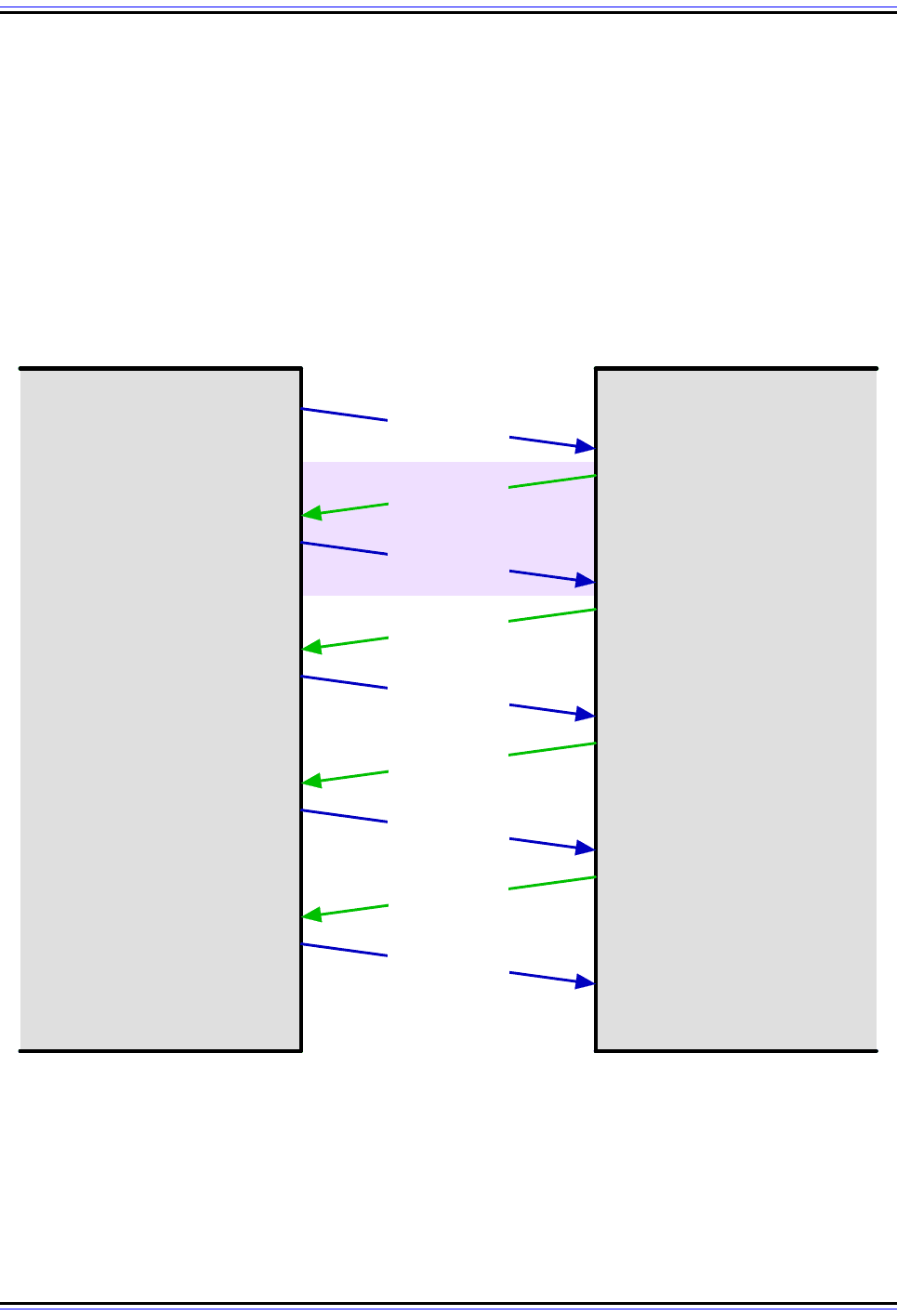
The TCP/IP Guide - Version 3.0 (Contents) ` 1362 _ © 2001-2005 Charles M. Kozierok. All Rights Reserved.
1. Client sends Read Request with options.
2. Server sends Option Acknowledgment.
3. Client sends regular acknowledgment for “block #0”, that is, it acknowledges the
OACK.
4. Server sends data block #1.
5. Client acknowledges data block #1.
Etc…
Figure 295: TFTP Read Process With Option Negotiation
This diagram shows the same example illustrated in Figure 293, but with one added message exchange used
for option negotiation (purple background). The client’s initial Read Request here includes options that it
wants to use for this transfer. The server responds not immediately with the first data block, but with an Option
Acknowledgment. The client indicates receipt of the OACK by sending an acknowledgment using block #0.
The server sends data block #1 and the rest of the exchange proceeds as normal.
TFTP ServerTFTP Client
1. Send Read Request
For File With Options
4. Receive Acknowledgment,
Send Data Bytes 1 to 512
6. Receive Acknowledgment,
Send Data Bytes 513 to 1,024
5. Receive Block #1,
Send Acknowledgment
DATA
(Block #1)
ACK
(Block #1)
DATA
(Block #2)
7. Receive Block #2,
Send Acknowledgment
ACK
(Block #2)
8. Receive Acknowledgment,
Send Data Bytes 1,025 to 1,200
DATA
(Block #3)
ACK
(Block #3)
9. Receive Block #3,
Send Acknowledgment
10. Receive Acknowledgment;
File Transfer Complete
RRQ
(With Options)
OACK
2. Receive Read Request,
Send Option Acknowledgment
3. Receive OACK,
Send Acknowledgment
ACK
(Block #0)

The TCP/IP Guide - Version 3.0 (Contents) ` 1363 _ © 2001-2005 Charles M. Kozierok. All Rights Reserved.
TFTP Write Process With and Without Option Negotiation
The initial message exchange for a normal write (without option negotiation):
1. Client sends write request.
2. Server sends acknowledgment.
3. Client sends data block #1.
4. Server acknowledges data block #1.
…
And a write with option negotiation:
1. Client sends write request with options.
2. Server sends option acknowledgment (instead of regular acknowledgment).
3. Client sends data block #1.
4. Server acknowledges data block #1.
…
TFTP Options
Table 235 contains a summary of the three TFTP options currently defined.
TFTP Message Formats
Unlike FTP, all communication in TFTP is accomplished in the form of discrete messages
that follow a particular message format. The reason why TFTP and FTP are so different in
this regard is the different transport protocols they use. FTP uses TCP, which allows data to
be streamed a byte at a time; FTP also makes use of a dedicated channel for commands.
TFTP runs on UDP, which uses a conventional “header/data” formatting scheme.
Table 235: TFTP Options
TFTP
Option
Name
TFTP Option
Code (Used in
Request
Messages)
Defining
RFC
Description
Block Size blksize 2348
Allows the client and server to send data blocks of a size
different than 512 bytes, to improve efficiency or address
limitations of a particular type of network.
Timeout
Interval
interval 2349
Permits the client and server to agree on a specified
number of seconds to use for their retransmission timers.
Again, may be of value on certain networks with high
latency or other special requirements.
Transfer Size tsize 2349
Lets the device sending the file (client on a write, server on
a read) tell the other device the size of the file before the
transfer commences. This allows the receiving device to
allocate space for it in advance.
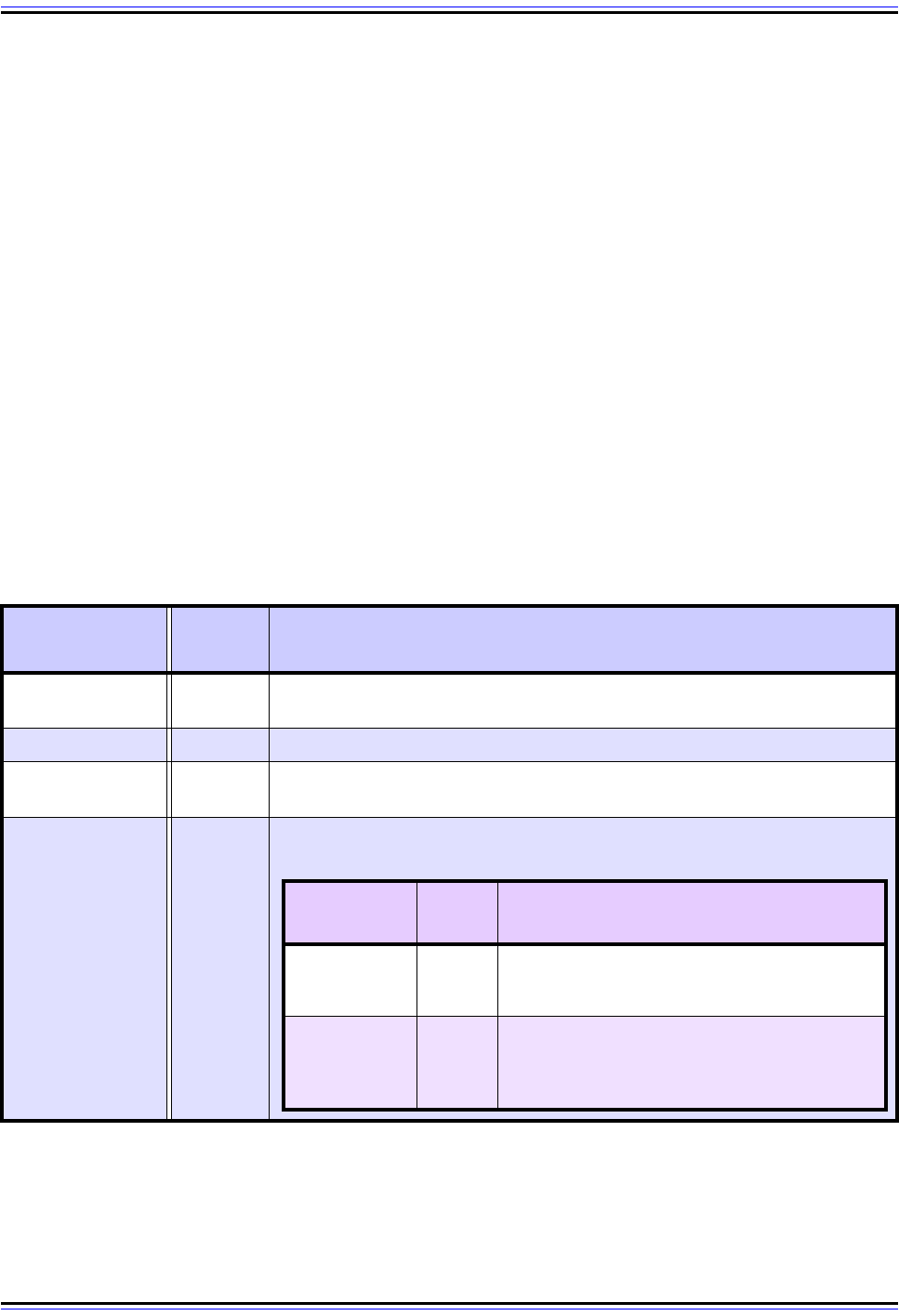
The TCP/IP Guide - Version 3.0 (Contents) ` 1364 _ © 2001-2005 Charles M. Kozierok. All Rights Reserved.
The original TFTP standard defines five different types of messages: Read Request (RRQ),
Write Request (WRQ), Data (DATA), Acknowledgment (ACK) and Error (ERROR). The
TFTP option extension feature defines a sixth message: Option Acknowledgment (OACK).
Of these six messages, the first two share the same message format. The others all have
their own unique format. The only common field in every TFTP message is the Operation
Code (Opcode), which tells the recipient of the message what type it is.
TFTP's message formats are different than those used for certain other protocols because
many of the fields are variable in length. Usually, variable-length fields in messages are
expressed using a preceding length field that specifies the length of the variable-sized field.
Instead, TFTP sends such fields as strings of ASCII characters using netascii, the Tel net
version of ASCII. The end of the string is marked by a zero byte. The exception to this is the
data field in Data messages, the content of which depends on the transfer mode.
You will find below the details of each TFTP message type.
Read Request and Write Request Messages
These messages use a common message format, described in Table 236 and shown
graphically in Figure 296.
Table 236: TFTP Read Request / Write Request Message Format
Field Name
Size
(bytes)
Description
Opcode 2
Operation Code: Specifies the TFTP message type. A value of 1 indicates
a Read Request message, while a value of 2 is a Write Request message.
Filename Variable Filename: The name of the file to be read or written.
Mode Variable
Transfer Mode: The string “netascii” or “octet”, zero-terminated. (Why not
just use one byte set to 0 for netascii and 1 for octet? Don't ask me! ☺)
Options Variable
O
p
ti
ons:
Wh
en
th
e c
li
en
t
suppor
t
s
TFTP
op
ti
ons,
it
w
ill
enco
d
e
th
em
i
n
sequence following the Mode field. Each option consists of these subfields:
Subfield
Name
Size
(bytes)
Description
optN Variable
Option Code for Option #N: A string specifying
the name of the option; currently, “blksize”,
“interval” and “tsize” are supported.
valueN Variable
Option Value for Option #N: The value the client
is requesting for this option. Note that this is a
zero-terminated string just like other TFTP
variable-length fields, even for a numeric value.
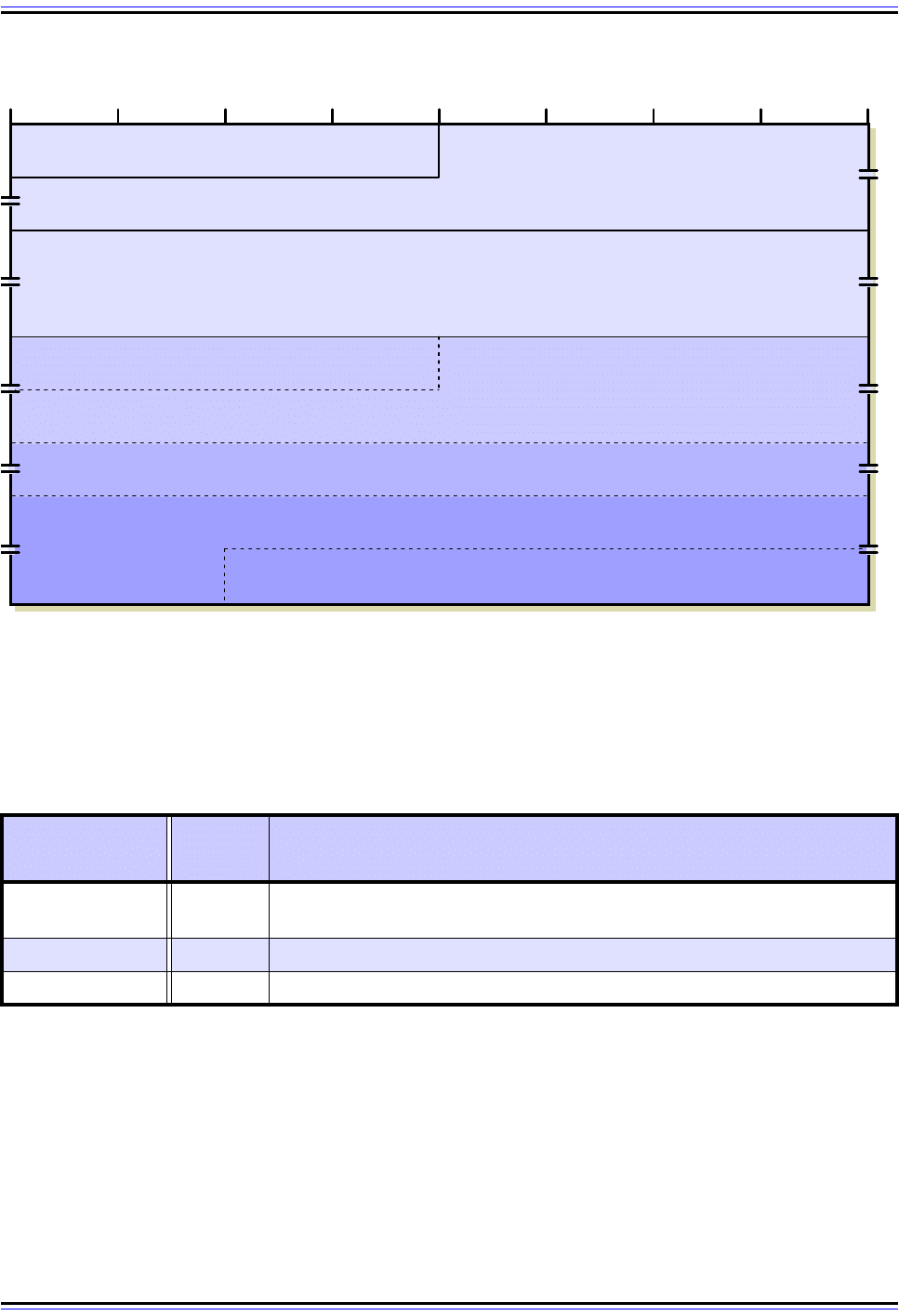
The TCP/IP Guide - Version 3.0 (Contents) ` 1365 _ © 2001-2005 Charles M. Kozierok. All Rights Reserved.
Data Messages
Data blocks are sent using the simplified format shown in Table 237 and Figure 297.
Figure 296: TFTP Read Request / Write Request Message Format
Table 237: TFTP Data Message Format
Field Name
Size
(bytes)
Description
Opcode 2
Operation Code: Specifies the TFTP message type. A value of 3 indicates
a Data message.
Block # 2 Block Number: The number of the data block being sent.
Data Variable Data: 0 to 512 bytes of data.
Operation Code = 1 (RRQ) or 2 (WRQ)
Transfer Mode
Option #1 Code
4 8 12 16 20 24 28 320
...
Option #1 Value
Filename
Option #N Value
Option #N Code
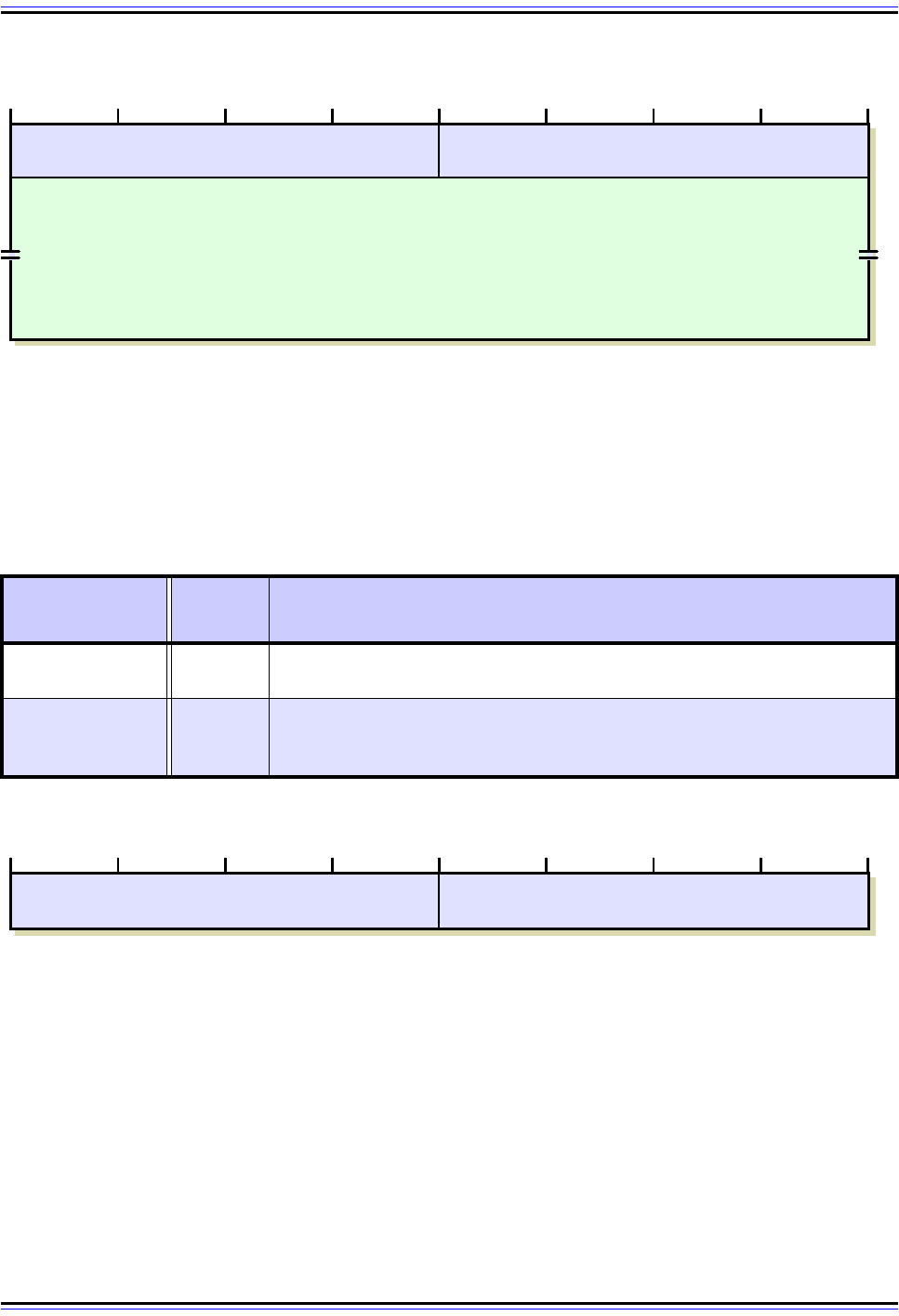
The TCP/IP Guide - Version 3.0 (Contents) ` 1366 _ © 2001-2005 Charles M. Kozierok. All Rights Reserved.
Acknowledgment Messages
Acknowledgments have the simplest format of any TFTP message, as you can see in Table
238 and Figure 298.
Figure 297: TFTP Data Message Format
Table 238: TFTP Acknowledgment Message Format
Field Name
Size
(bytes)
Description
Opcode 2
Operation Code: Specifies the TFTP message type. A value of 4 indicates
an Acknowledgment message.
Block # 2
Block Number: The number of the data block being acknowledged; a
value of 0 is used to acknowledge receipt of a write request without
options, or to acknowledge receipt of an option acknowledgment.
Figure 298: TFTP Acknowledgment Message Format
Operation Code = 3 Block Number
Data
4 8 12 16 20 24 28 320
Operation Code = 4 Block Number
4 8 12 16 20 24 28 320
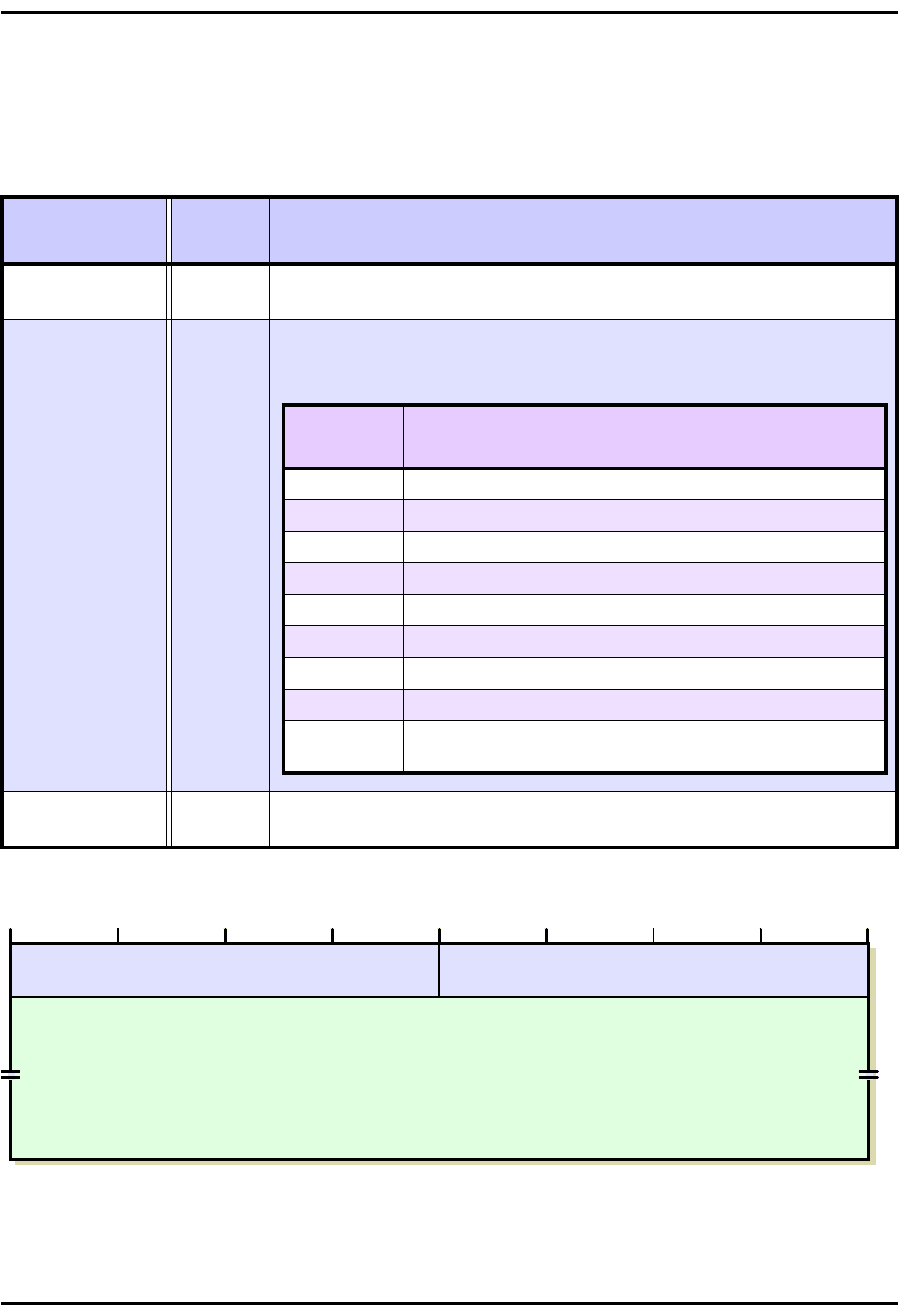
The TCP/IP Guide - Version 3.0 (Contents) ` 1367 _ © 2001-2005 Charles M. Kozierok. All Rights Reserved.
Error Messages
Error messages can be sent by either client or server in cases where a problem is detected
in the communication. They have the format indicated in Table 239 and Figure 299.
Table 239: TFTP Error Message Format
Field Name
Size
(bytes)
Description
Opcode 2
Operation Code: Specifies the TFTP message type. A value of 5 indicates
an Error message.
Error Code 2
Error Msg Variable
Error Message: A descriptive text error message string, intended for
“human consumption”, as the standard puts it. ☺
Figure 299: TFTP Error Message Format
E
rror
C
o
d
e:
A
numer
i
c co
d
e
i
n
di
ca
ti
ng
th
e
t
ype o
f
message
b
e
i
ng commu-
nicated. Values 0 to 7 are defined by the TFTP standard, while value 8 was
added by the TFTP option extension:
Error Code
Value
Error Type
0 Not defined; see error message field for details.
1 File not found.
2 Access violation.
3 Disk full or allocation exceeded.
4 Illegal TFTP operation.
5 Unknown transfer ID.
6 File already exists.
7 No such user.
8
Client transfer termination due to unacceptable option
negotiation.
Operation Code = 5 Error Code
Error Message
4 8 12 16 20 24 28 320
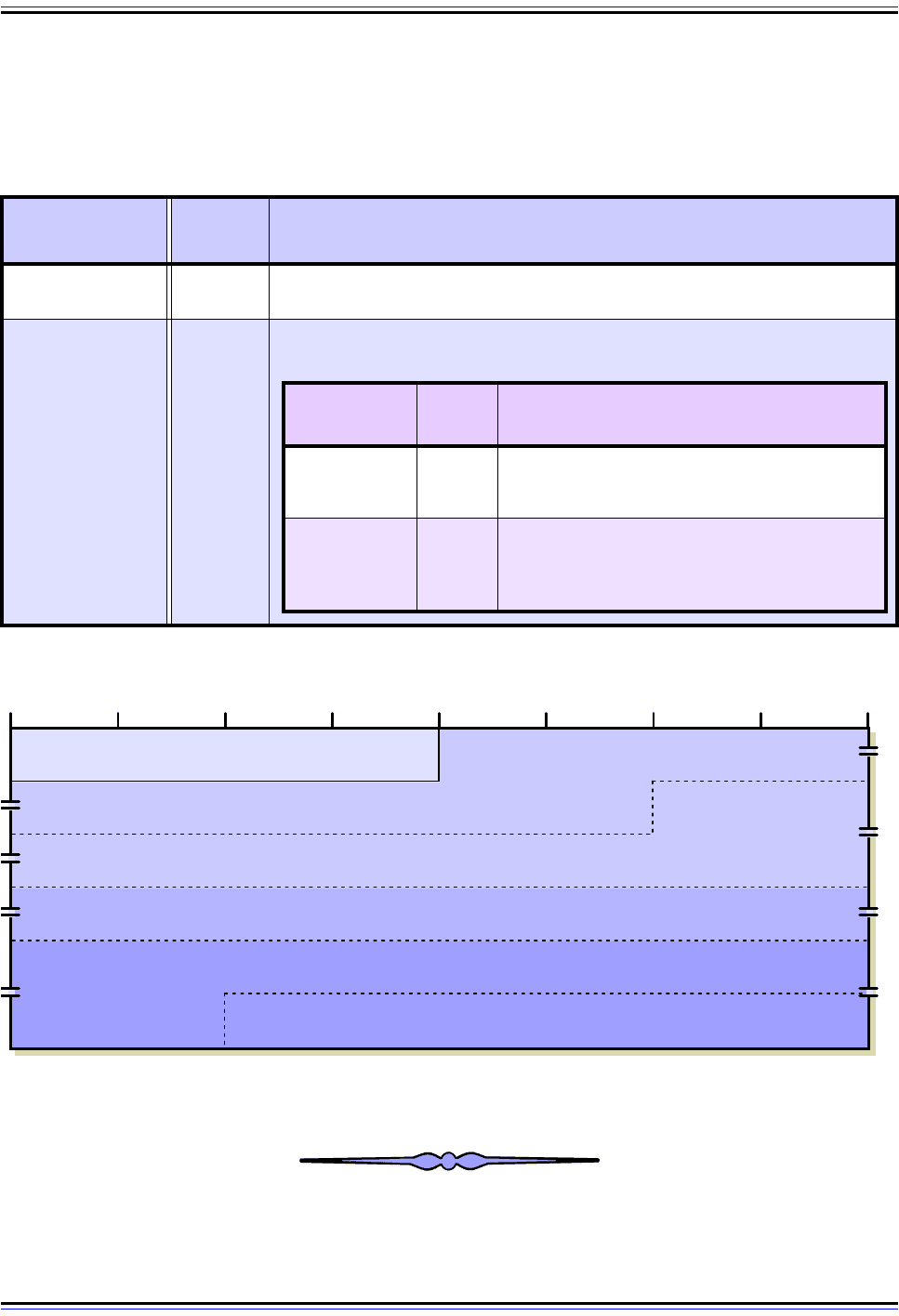
The TCP/IP Guide - Version 3.0 (Contents) ` 1368 _ © 2001-2005 Charles M. Kozierok. All Rights Reserved.
Option Acknowledgment Messages
OACK messages are used to acknowledge receipt of TFTP options. They are structured as
shown in Table 240 and Figure 300.
Table 240: TFTP Option Acknowledgment Message Format
Field Name
Size
(bytes)
Description
Opcode 2
Operation Code: Specifies the TFTP message type. A value of 6 indicates
an Option Acknowledgment message.
Options Variable
Figure 300: TFTP Option Acknowledgment Message Format
O
p
ti
ons:
A
li
s
t
o
f
op
ti
ons
b
e
i
ng ac
k
now
l
e
d
ge
d
b
y
th
e server.
E
ac
h
op
ti
on
consists of these two subfields:
Subfield
Name
Size
(bytes)
Description
optN Variable
Option Code for Option #N: A string specifying
the name of the option, copied from the Read
Request or Write Request message.
valueN Variable
Option Value for Option #N: The acknowledged
value for the option, which may be the value that
the client specified, or an alternative value,
depending on the type of option.
Operation Code = 6
4 8 12 16 20 24 28 320
...
Option #1 Value
Option #N Value
Option #N Code
Option #1 Code
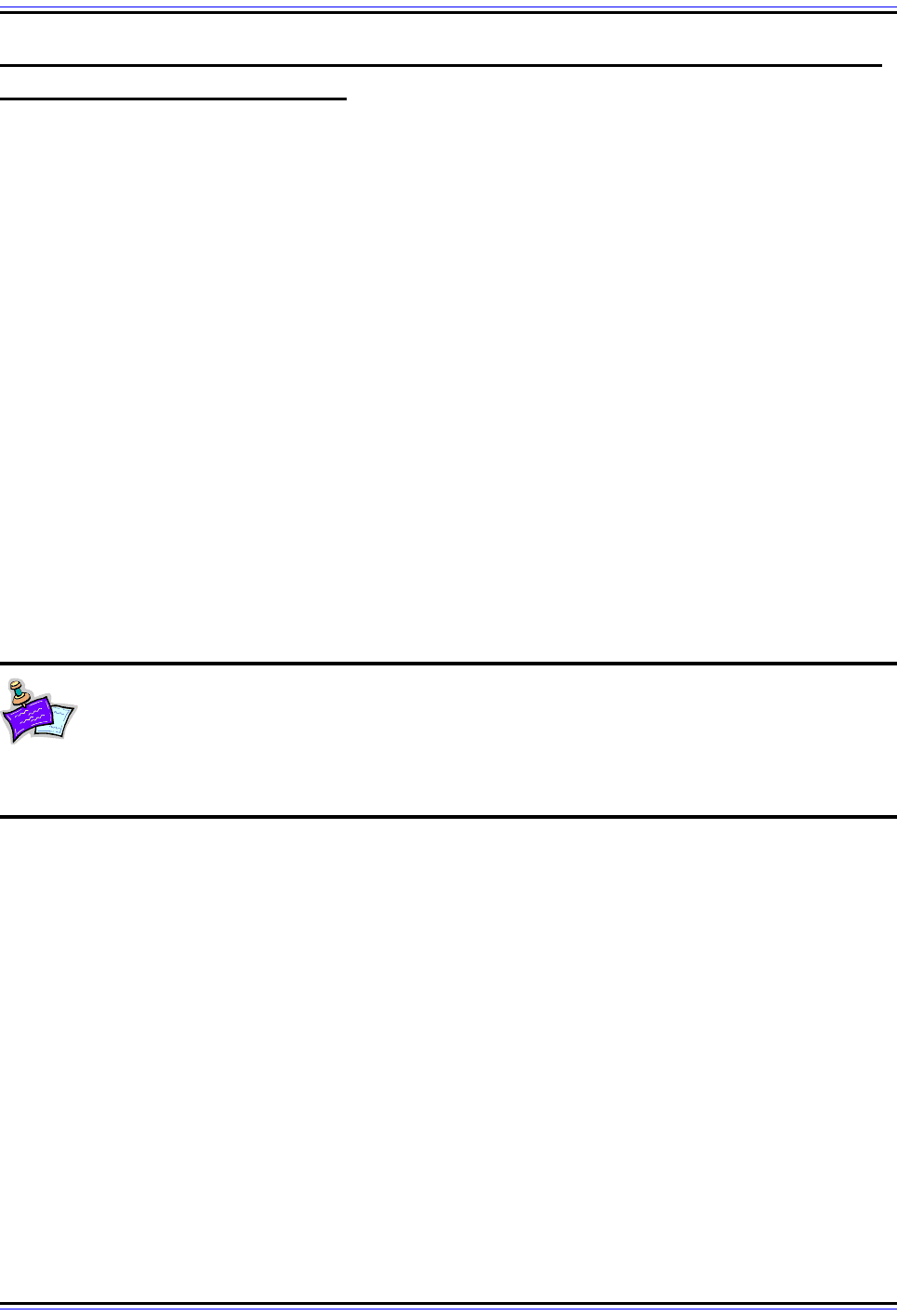
The TCP/IP Guide - Version 3.0 (Contents) ` 1369 _ © 2001-2005 Charles M. Kozierok. All Rights Reserved.
TCP/IP Electronic Mail System: Concepts and Protocols (RFC 822,
MIME, SMTP, POP3, IMAP)
It is common for human beings to create systems that are reminiscent of ones to which they
are already accustomed. We are all accustomed to using the regular mail system to send
letters and other documents from our location to recipients anywhere that the postal system
serves. Naturally, one of the first applications of internetworks was to create an electronic
version of this conventional mail system that would allow messages to be sent in a similar
manner, but more quickly and easily. Over the course of many years, an electronic mail
system for TCP/IP was created and refined. It is now the most widely used means of
electronic messaging in the world.
In this section I describe TCP/IP electronic mail in detail, in five sections that discuss
electronic mail concepts and the various components and protocols that comprise the
overall TCP/IP e-mail system. The first subsection provides an overview of TCP/IP
electronic mail and discusses the way that it is used and the different protocols and
methods that comprise the system. The second discusses how e-mail messages are
addressed, and the third covers standard and special formats for e-mail messages. The
fourth and fifth subsections describe the TCP/IP protocols that implement electronic mail
functionality. This includes an examination of the Simple Mail Transfer Protocol (SMTP),
which is responsible for the delivery of e-mail, and several protocols and methods used for
mailbox access and mail retrieval, including POP3 and IMAP.
Note: This discussion focuses primarily on the mechanisms used for electronic
mail composition, delivery and access in modern internetworks. In the e-mail
overview topic I make mention of some techniques used in the past for TCP/IP
electronic mail, but only briefly for historical completeness, and to contrast these methods
to the ones presently used.

The TCP/IP Guide - Version 3.0 (Contents) ` 1370 _ © 2001-2005 Charles M. Kozierok. All Rights Reserved.
TCP/IP Electronic Mail System Overview and Concepts
Electronic mail in the TCP/IP protocol suite is not implemented as just a single protocol or
technology. Rather, it is a complete system that contains a number of related components
that work together. These include standards defining methods for addressing and message
formatting, and a number of protocols that play different functions in implementing
electronic mail messaging. Before proceeding to examine each of these pieces, it makes
sense to start with an overview of the system as a whole.
In this section I provide an introductory look at TCP/IP electronic mail, to help you under-
stand the system, how it works, and how different components fit into it. I begin with an
overview and history of e-mail and its implementation in TCP/IP. I provide a general
overview of the steps involved in the e-mail communication process. I conclude with a more
specific discussion of the communication model used in TCP/IP and the roles played by
various TCP/IP devices and protocols in the sending and receiving of electronic mail.
TCP/IP Electronic Mail System Overview and History
The need to communicate is as old as humanity itself. Thousands of years ago, communi-
cation was, of necessity, almost exclusively local. Messages were primarily oral, and even
when in writing, rarely delivered a great distance. Most people never travelled far from their
homes, and rarely communicated with those distant from themselves. But even in ancient
times, messengers were used by leaders to send short pieces of critical information from
place to place. It was slow and unreliable, but some messages were important enough that
an effort to communicate often had to be made in spite of the difficulties.
Advances in transportation led to advances in communication capability, eventually
resulting in the creation of physical mail systems. Today, these systems have evolved to the
point where anyone in the developed world can send a letter to just about anyone else.
Reliability has vastly improved, despite all the jokes people make about the postal service.
☺ Speed is also much better than it was in the olden times, with messages now taking days
to reach their destination instead of weeks or months.
Waiting even days for a message to get from one place to another is pretty slow by the
standards of our modern world. For this reason, one of the most natural applications of
networks was to use them as a replacement for the physical transportation of messages
from one place to another. Transforming mail from a physical process to an electronic one
yields enormous benefits, chief among them greatly increased communication speed, the
ability to instantly send one message to multiple recipients, and the ability to get nearly
instantaneous feedback upon receipt of a message.
The Early Days of Electronic Mail
The idea behind electronic mail (e-mail or email) is not only as old as computer networks, it
actually predates internetworking. The first electronic mail systems were implemented on
traditional mainframe computers. These are single large computers accessed by many
users simultaneously through connected terminals. An e-mail system on a mainframe
consisted of a set of software running on the mainframe that implemented the entire
